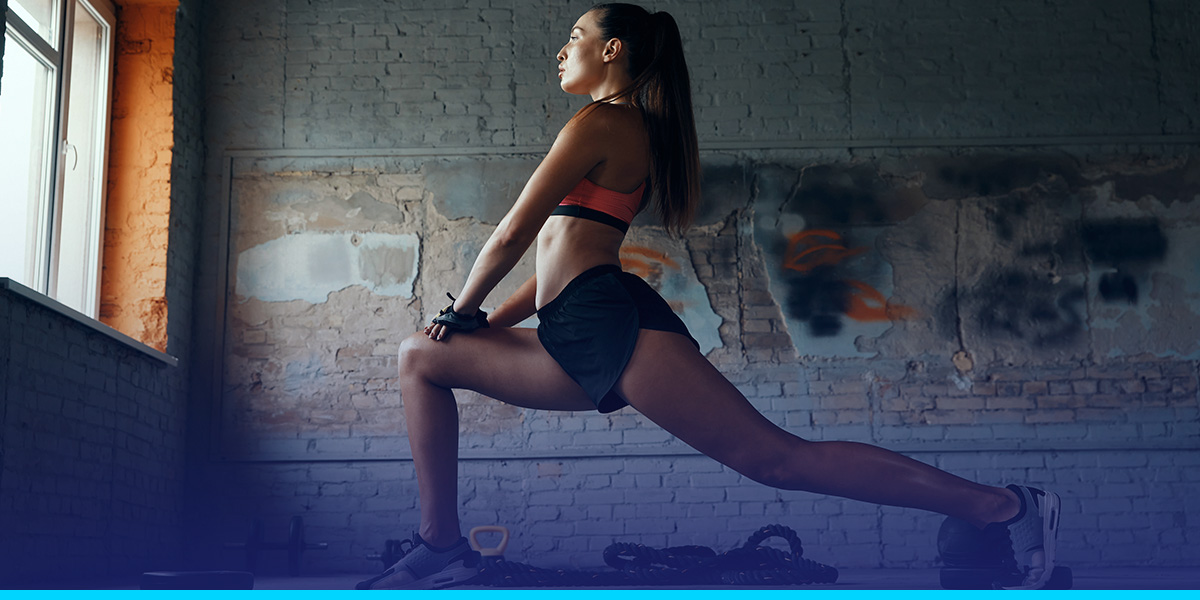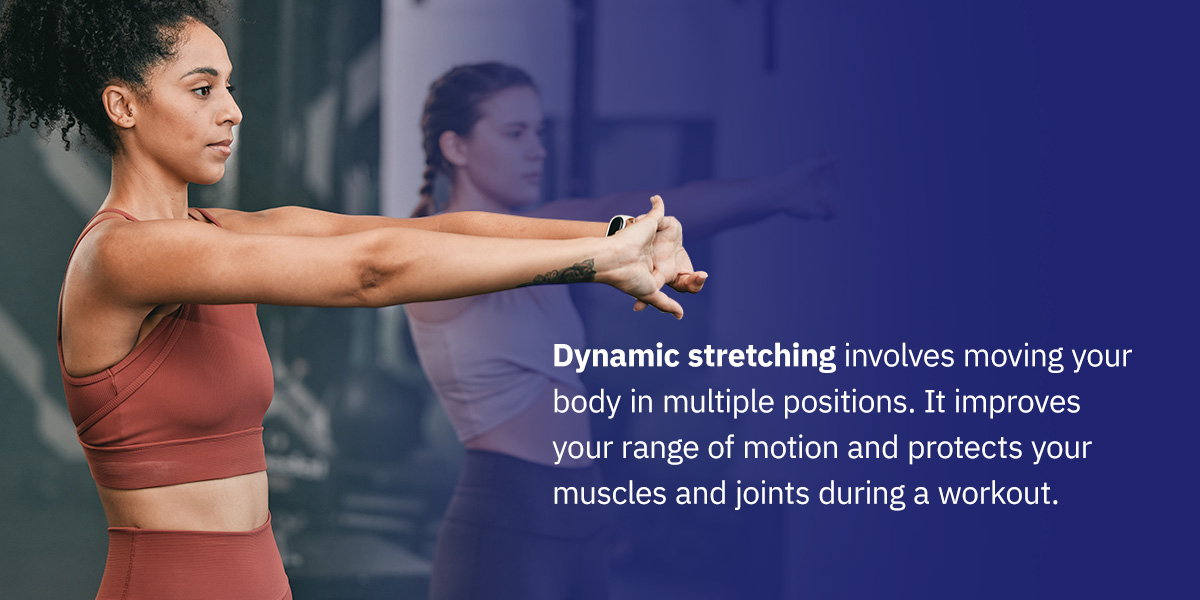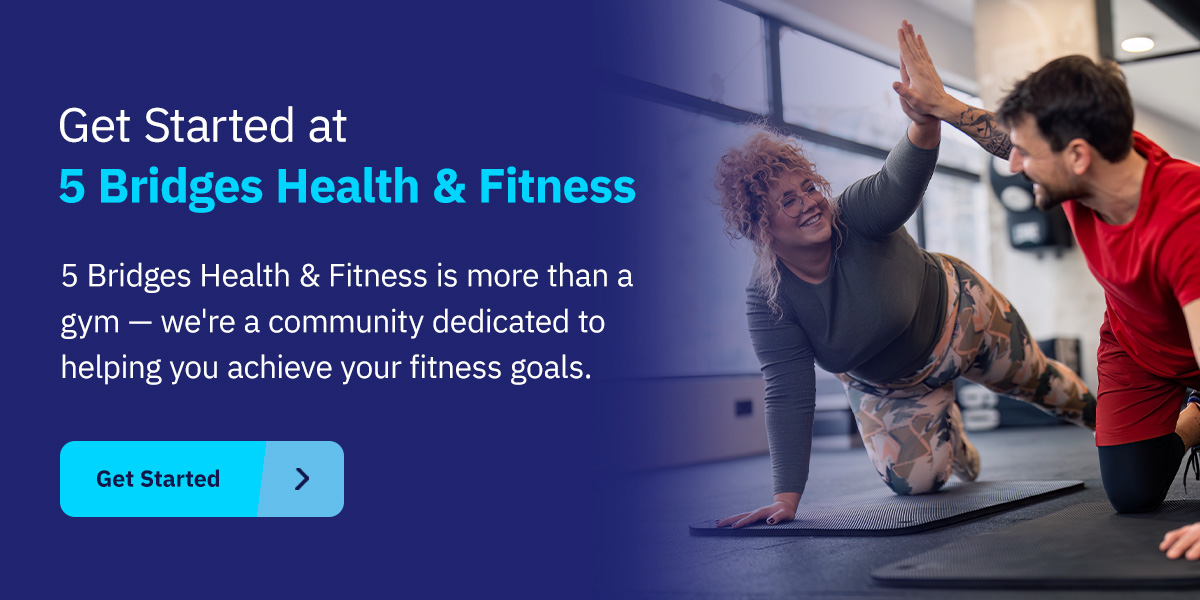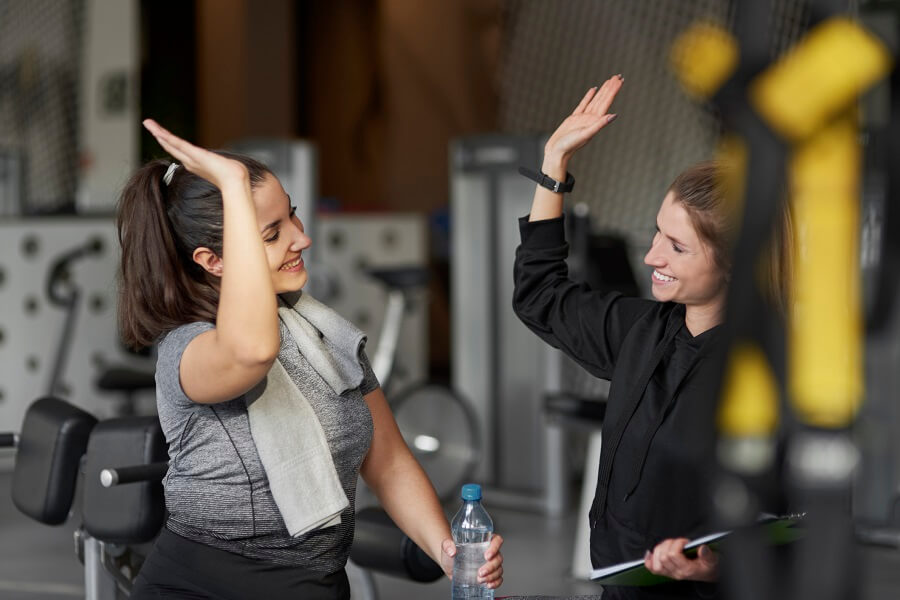Stretching: Dynamic vs. Static Stretching
Stretching: Dynamic vs. Static Stretching
Posted on: August 21, 2023 in Stretching
Incorporating stretching into your daily routine can offer numerous health and physical benefits. Stretching can be a versatile and enjoyable task. Understanding various stretching techniques is an excellent way to make it part of your lifestyle and workouts.
Why Is Stretching Important?
Stretching is important for good muscle health. It keeps your muscles active and can prepare your body for physical activity. If you sit for a long time during the day, your muscles can become inactive and tighten during movements like walking or bending. Even during relatively stationary activities like standing, sitting and sleeping, your muscles can tense and cause pain and discomfort. Stretching loosens your muscles and improves your mobility and flexibility.
Before workouts, stretching can warm up your muscles and prevent injuries. It can also improve your performance throughout your workout and enhance muscle contraction. Stretching can lengthen your muscles, helping them expand during workouts. After workouts, stretching can cool down your muscles and aid recovery, preventing stiffness and pain.
Daily stretching can strengthen muscles, providing better joint support and reducing aches and pains. It can also improve your balance and help you feel more relaxed and fit.
You can do many stretching variants for relaxation, improved range of motion, muscle strength and agility. Dynamic and static stretching are common pre- and post-workout stretching techniques. They target different bodily areas and offer unique advantages. Understanding static and dynamic stretching can help you use both methods effectively.
What Is Static Stretching?
Static stretching is a stationary technique for strengthening, lengthening and relaxing muscles. It can also improve your range of motion and prevent injuries. Static stretching requires limited to no movement for a specific time. For example, you sit flat on the floor and bend, flex or elongate your leg and feet in one position for 15 to 60 seconds. Holding your position for a set time puts tension on the muscle or muscles you’re stretching. Your muscles start to relax and cool down.
While you can do static stretches anytime, they can be most effective after a strenuous workout. During training, your muscles need more oxygen to help energize you, creating lactic acid. Lactic acid buildup can cause soreness and muscle cramps.
Static stretching can release lactic acid and promote blood circulation and muscle recovery. Lengthening or elongating various body parts like your legs, arms, hips and lower back in a static position can also improve joint movement and promote relaxation.
What Is Dynamic Stretching?
Dynamic stretching involves moving your body in multiple positions. It improves your range of motion and protects your muscles and joints during a workout. You can do dynamic stretches before a workout to prep areas like your lower back, legs, arms and knees for high- and low-impact movements.
Activities like lunges, jumping, push-ups and burpees require fast and flexible body movements. Dynamic stretching warms up your muscles so you can do agile movements while protecting your joints. It helps your body absorb impact when jumping, landing and moving through multiple positions.
For example, you can bend forward or hinge at your hips to fire up your lower back, glutes and hamstrings before you work out. You can rotate your torso, move your arms and touch your toes to warm up your entire body. You can also kneel one leg to the ground or lunge, alternating between right and left to activate your leg muscles.
Dynamic stretches can simulate your workout moments. It can protect your muscles and joint from injury when you add additional loads like weights to your workout. You can also do dynamic stretches to improve your speed, flexibility and agility during your exercise.
Benefits of Static Stretching vs. Dynamic Stretching
While dynamic and static stretching can perform different functions, they offer multiple benefits:
Static Stretching Benefits
Some of the advantages of static stretches include:
- Improves your flexibility
- Enhances your joint movement
- Prevents muscle stiffness and cramps
- Relaxes your muscles and body after workouts
- Can focus on body alignment and improve posture
- Improves your blood circulation and muscle recovery
Dynamic Stretching Benefits
Here are some of the advantages of dynamic stretches:
- Improves balance movement control
- Enhances your entire range of motion
- Focuses on improving muscle strength
- Activates your muscles for sudden movements
- Prevents muscle and joint injury during workouts
- Prepares your body for strenuous physical activity
- Improves your speed, agility and performance during workouts
Static vs. Dynamic Stretching: When to Use Each Type
Knowing when to use static and dynamic stretching can help you get the best outcome. Each stretching variant focuses on different functions, like muscle rejuvenation and preparation.
When to Use Static Stretching
Static stretching is useful for cooling your muscles down after your workout. Doing static stretches when your muscles are warm can help improve your flexibility and range of motion. Holding a stretch causes muscle tension and can cause harm when your muscles are cold or unprepared. Doing static stretches post-physical activity can prevent harming or injuring your muscles.
Warm muscles can also promote deeper muscle extensions. Static stretches cool and relax the entire body, and you can do stretches that target all your muscle groups. For example, you can lengthen your leg by leaning on your heel and flexing your toes to stretch your calves and hamstrings. You can bend over and touch the ground for some time.
When to Use Dynamic Stretching
You can do dynamic stretches before your workout to fire up your muscles. Dynamic movement prevents stretching your muscles too much before they are warm. With quick functional movements, you can activate various muscle groups for a workout, preventing injuries. Before high- or low-impact activity, you can do moderate agile exercises similar to your workout.
You can do dynamic stretches for any amount of time before physical activity. You can do light squats and lunges to activate your legs and posterior muscles. You can do arm circles to warm up your shoulders and neck rotations before weight or strength workouts.
What Is the Difference Between Static and Dynamic Warm-Ups?
The most significant difference between static and dynamic warm-ups is that one prepares your body for relaxation and the other for physical activity. Static stretching prepares your muscles and body for rejuvenation and muscle recovery. You can do static warm-ups, but saving static stretching for after a workout is better. Dynamic stretches prepare your muscles for functional movements and exercises. It can help your body withstand various physical activities and perform for your workout duration.
Get Started at 5 Bridges Health & Fitness for a Comprehensive Training Experience
5 Bridges Health & Fitness is more than a gym — we’re a community dedicated to helping you achieve your fitness goals. We prioritize fitness, training, education and nutrition to walk with you during every step on your fitness and health path. We understand that everyone has a different fitness and nutrition level. That’s why our certified trainers work with you to understand your needs.
Select a membership plan to fit your needs and goals, and get started with us today!





